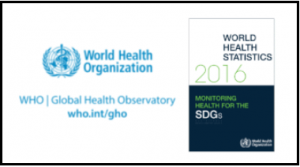World Health Statistics for the year 2016 have been reported by World Health Organization about Life Expectancy since 2000.
Trends in Life Expectancy:
- Increased by 5 years between 2000 and 2015 and increasing from 1960
- Reverse trend happened during 1990s in Africa due to AIDS and Easter Europe because of Collapse of Soviet Union.

- The increase was in the African Region where life expectancy increased by 9.4 years to 60 years due to improvements in child survival, malaria control and expanded access to antiretrovirals for treatment of HIV
Global life expectancy for children born in 2015 was 71.4 years (73.8 years for females and 69.1 years for males)
- Highest Life Expectancy – 86.6 years – Women in Japan
- Highest Life Expectancy – 81.3 years – Men in Switzerland
- Lowest Life Expectancy – 50.8 years – Women in Sierra Leone
- Lowest Life Expectancy – 49.3 years – Men in Sierra Leone
Healthy life expectancy – 63.1 years globally (64.6 years for females and 61.5 years for males)
Focus: Disease-specific health targets for 2015
Statement of Report:
- Inequalities in access to health services within countries
- National average for a set of reproductive, maternal and child health services
Country where equal access to services for Reproductive, Maternal, New Born and Child Health
Swaziland, Costa Rica, Maldives, Thailand, Uzbekistan, Jordan and Mongolia
“World Health Statistics 2016”
- 303000 women die due to complications of pregnancy and childbirth
- 2 million people are newly infected with HIV, and there are 9.6 million new TB cases and 214 million malaria cases
- 25 million people die from road traffic injuries
- 3 million people die due to air pollution caused by cooking fuels
About WHO:
- Agency of the United Nations concerned with international public health
- Headquarters: Geneva, Switzerland
- Founded: 1948
- Head: Margaret Chan
AffairsCloud Recommends Oliveboard Mock Test
AffairsCloud Ebook - Support Us to Grow
Govt Jobs by Category
Bank Jobs Notification






